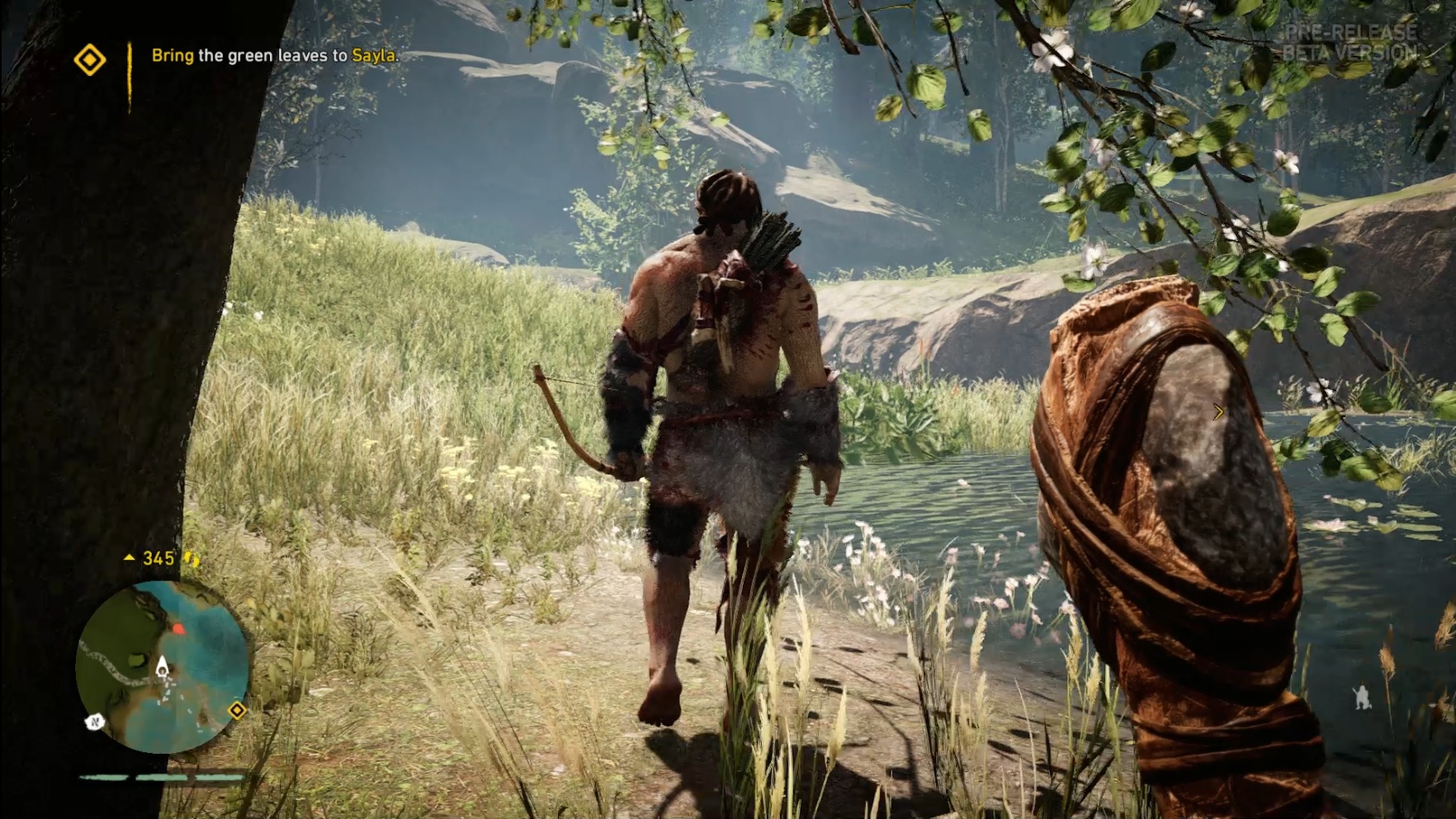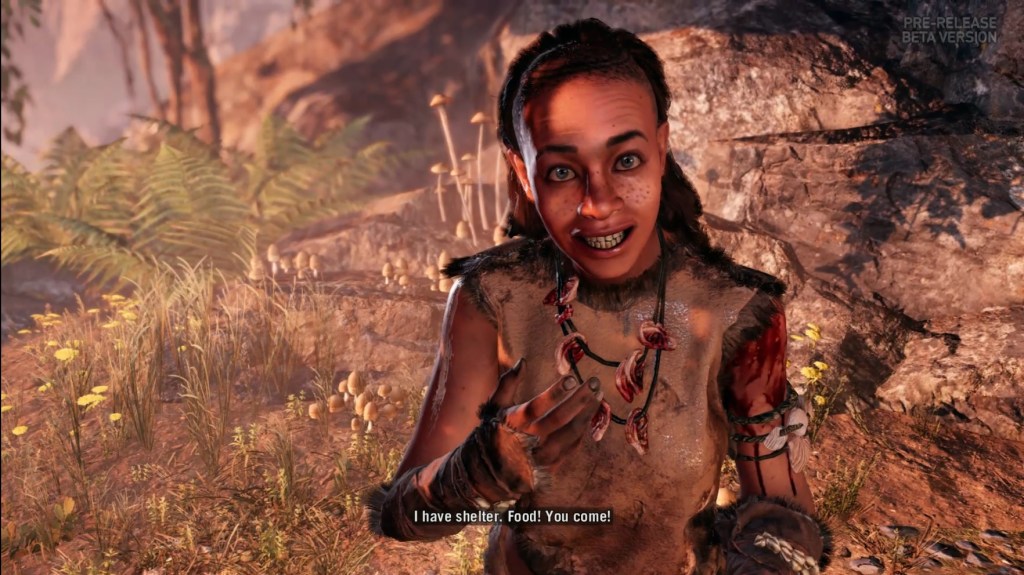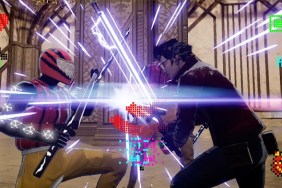While Far Cry Primal is technically an offshoot of the main Far Cry series, the more time I spent with the first three hours of Far Cry Primal at a private Ubisoft event, the more I thought it was the other way around. Foraging green leaves for healing, firing arrows at enemies for headshots, hunting beasts in the wild for meat, collecting artifacts throughout the landscape, driving enemies away from your territory – a large part of the core Far Cry gameplay just makes more sense in the context of a warrior of the Wenja tribe in 10,000 BCE than a 20-something youngblood that somehow has unbelievable stealth and gun-handling skills to take down a modern regime. Yes, I'm looking at you, Far Cry 4.
Conceptually, Far Cry Primal is exceedingly more immersive and well-integrated with the game's fundamental design and artistic themes. In a way, the developers have taken a cue from Assassin's Creed, researching the time period in persuasively portraying the prehistoric artifacts, topography, and even languages, of course while taking creative liberties to make the game as dynamic and viscerally exciting as possible.
The story follows you as a lost warrior attempting to find the remnants of your tribe in the land of Oros, a lush, bountiful valley that isn't far from The Great Valley in The Land Before Time. After your band of warriors are mauled by a tiger and you struggle to pass through a series of lost caves, you finally reach Oros and find Sayla, a Wenja woman who hopes that you can gather together the lost members of the tribe and defend them against two encroaching rival clans: the cannibalistic Udom who paint their faces in blood and adorn themselves with bones, and the more technically-advanced Izila who wear blue full-body tattoos and immolate their adversaries as an offering to their Sun Goddess.

This tribal trifecta is part-fiction, part-reality. The Udom are a gorier version of the Neanderthals whereas the Izila are more influenced by Aztec culture and worship. More than that, the writers have collaborated with linguistic professors in creating a simplified version of PIE, or Proto-Indo-European, and have given each tribe a particular dialect to reflect their nature. If you listen carefully, the Wenja have a more rhythmical, passionate interpretation of PIE, whereas the Udom have a more basic, gruntier variation and the Izila have a more lyrical, smoother variation.
Environmentally, you'll explore a variety of locations, starting off in the abundant bounty of the forest and moving through redwoods and swampland, before heading into the Udom's natural habitat of the cold mountains. There, you will need to craft winter clothing just to partially stave off the freezing temperature and make sure you stay close to a bonfire. Beyond that, you'll find collectibles peppered about like Daylah hands, spirit totems, Izila maska, and bracelets that all confer rewards.
You can expect to perform many of the familiar Far Cry tropes in Primal whether that's exploring a map filled with locations for animal hunting grounds, clearing enemy outposts for fast travel posts, or rescuing Wenja survivors from the other tribes in random events. Earning levels through experience points will get you skill points that you can apply in various skill trees for more health, better foraging skills, and more crafting possibilities.

Primal distinguishes its gameplay in numerous ways. As you might know already, the game is strictly single-player mainly because the developers don't want you to be overpowered, and you can tame beasts to your side by feeding them bait. You can then select them as companions who will attack enemies or defend a point on your command. Stealthy play favors the jaguar and tiger who will crouch when you do, but there's nothing wrong with ordering a brown bear or riding a mammoth to barrel through an enemy camp and watch chaos ensue. (There's also nothing wrong with just petting the animals out of adorableness. I will pay for more petting animations, Ubisoft, just sayin'.) Instead of using a camera for tagging enemies, you'll command an owl who can tag enemies and attack enemies on a cooldown. If you wanted, you can take out an entire Udom camp by animals alone without doing a thing yourself.
The other point of improvement is being able to rebuild the Wenja tribe into a lively encampment. Guiding friendly NPCs back home and building a hut for them will unlock their skill tree for your use. While you can't determine where each hut will be, you can upgrade huts to give you extra bonuses. By rescuing survivors through optional quests and events, you'll increase the camp's population which provides two important boons: more free resources that are stored in your supply every in-game day and you'll earn +2% XP for every 10 people over a count of 60 up to 300. That's sure to speed along the grindy nature of leveling.
Don't write this game off too hastily. Far Cry Primal is impressive and, by my reckoning, is primed to score even better than the main Far Cry titles. It will release worldwide for PS4 and Xbox One on February 23, 2016 and on PC on March 1, 2016.







